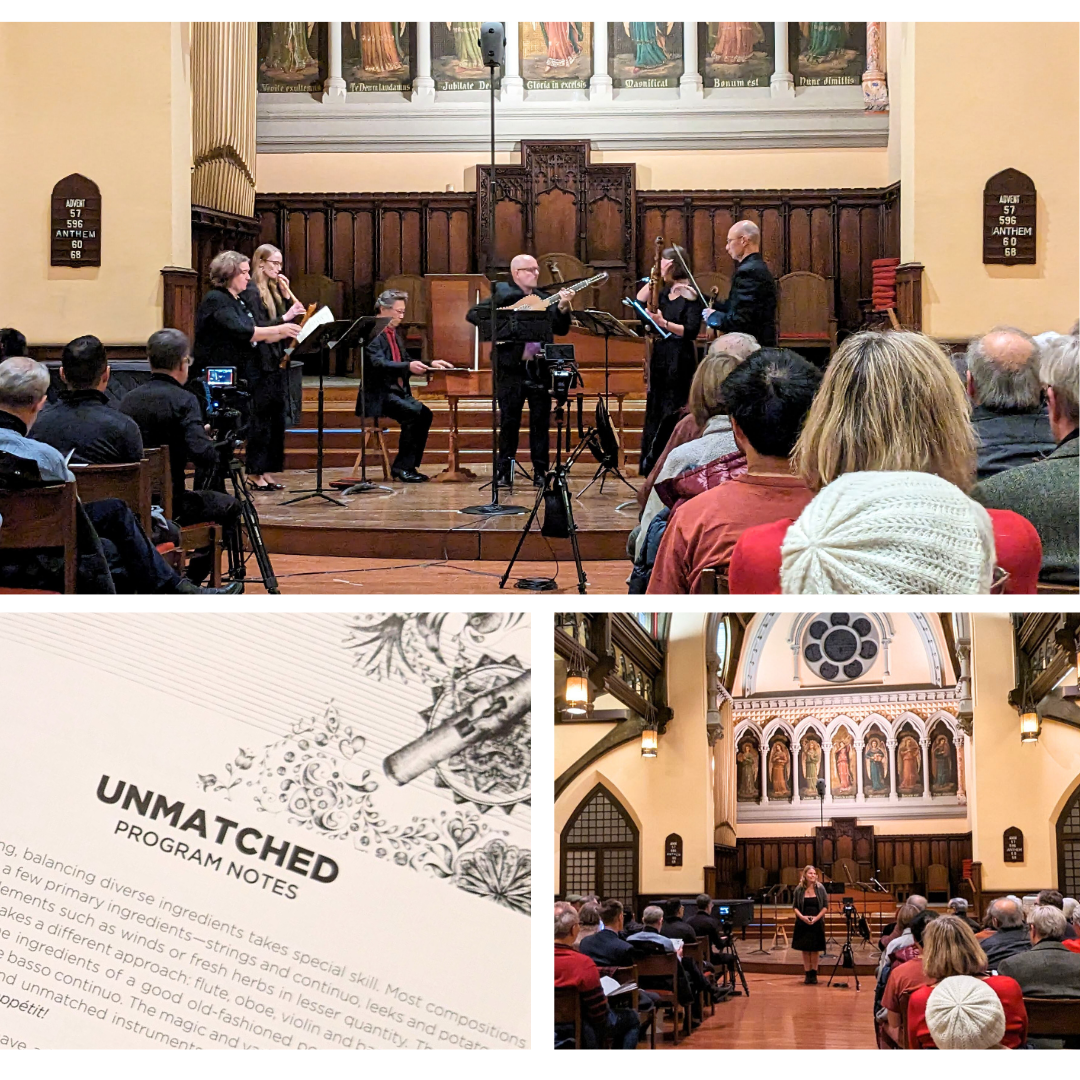A major challenge for ensembles focused on historical music, like baroque or medieval, is diversifying their programming. While commissioning or performing new works is an approach for some groups, it might not always be feasible for organizations dedicated to performing a particular period of music. A more nuanced approach involves creatively expanding the repertoire and acknowledging the historical lack of representation for composers outside the traditionally dominant European, male demographic.*
Beyond diversifying the program, engaging diverse audiences is equally crucial. People come from varied backgrounds, and we shouldn’t assume everyone attending a baroque concert has an encyclopedic knowledge of the era. Fortunately, innovative initiatives are breaking down barriers between performers and audiences. In this blog post, I focus on grantee Tempesta di Mate and note that how they made their program accessible for their audiences, especially as it pertains to performing complex music from the Baroque era.
Baroque music, spanning roughly from 1600 to 1750, is a period of rich and vibrant artistry in Western classical music. Imagine melodies that soar and dip, intricate ornamentation like lacework, and dramatic shifts in mood, all driven by a powerful rhythmic pulse. This music was composed for various settings, from grand churches to intimate court gatherings. Baroque music isn’t just dusty old tunes; it’s a vibrant and expressive window into a different era. By dipping your toes in, you’ll discover a world of beauty, complexity, and pure musical joy.
Tempesta di Mare stands out for its captivating performances and innovative audience engagement. Named after Antonio Vivaldi’s concerto “Storm at Sea,” the group focuses on reviving the magic of baroque music. While their mesmerizing repertoire and virtuosic skills are undeniable, it’s their unique approach to audience connection that truly impressed me. Their recent concert, titled “Unmatched,” showcased pieces with less common or “open” instrumentation. This allows for flexibility in performance, as different lines can be played by various instruments within their ranges.
But what truly captivated me was their program. Gone were dry musical dissertations in the program book; instead, Tempesta di Mare’s notes sparked curiosity with intriguing metaphors, akin to a delicious recipe explaining a musical concept. This clever tactic, along with personal insights shared by the performers, fostered a sense of community and made complex ideas readily digestible. So, if you ever find yourself near a Tempesta di Mare concert, take a moment to savor their program notes before immersing yourself in the musical storm. They’re both a delightful read and a springboard for deeper engagement with the music.
Tempesta di Mare’s pre-performance ritual wasn’t just a passive act of collecting data; it was an ingenious spark to ignite a two-way conversation with their audience. Instead of bombarding them with academic jargon or dry facts, they invited them to participate in a personal reflection. The simple act of scribbling a thought or two on a sticky note transformed the concert hall into a tapestry of shared curiosity and diverse perspectives.
This approach offers several benefits:
- Understanding the “why”: Beyond demographics or musical knowledge, the sticky notes reveal the emotional core of their audience’s connection to Baroque music. Are they drawn to the soaring melodies, the intricate counterpoint, or the historical context? This insight allows Tempesta to tailor their programming and commentary to resonate with the specific interests of the room.
- Breaking down barriers: The informality of the sticky note format disarms even the most intimidated concertgoer. It’s a gentle invitation to engage, not an intimidating test of knowledge. This fosters a sense of community and shared experience, dissolving the traditional performer-audience divide.
- Sparkling curiosity: Reading the diverse responses on the sticky notes can be a fascinating exercise for the musicians themselves. They might discover hidden interests in their audience, prompting them to explore new repertoire or delve deeper into specific aspects of the music. This collaborative approach can lead to a more dynamic and responsive performance.
Tempesta di Mare’s sticky note initiative is a refreshing example of how audience engagement can go beyond applause and polite smiles. It’s about creating a space for genuine dialogue, shared discovery, and a deeper appreciation for the timeless beauty of Baroque music. By actively listening to their audience, they not only tailor their performance, but also nurture a community of passionate music lovers.
Instead of solely focusing on established names, Tempesta di Mare urges the exploration of underrepresented composers and innovative reinterpretation of familiar works. This not only enriches the musical landscape but also fosters dialogue about historical biases and inclusivity. Tempesta di Mare’s example, with its engaging program notes and open instrumentation, demonstrates how such efforts can break down barriers, making complex music approachable and sparking curiosity in wider audiences. By embracing inclusivity and creative engagement, we can ensure that even “dusty old tunes” resonate with new generations and diverse listeners.
*The scarcity of documentation for minority composers from earlier eras is regrettable, but it doesn’t diminish their artistic merit. It’s our responsibility as music creators to delve deeper into history, unearth their stories, and spark open conversations about these issues. This doesn’t mean neglecting canons like Bach or Handel. Instead, showcasing newly discovered works by minority composers allows us to appreciate their previously unrecognized contributions, highlighting the societal biases that obscured their visibility. As we strive for a more equitable and just future in the 21st century, we can learn from past mistakes and ensure music history reflects a broader, more inclusive narrative.








